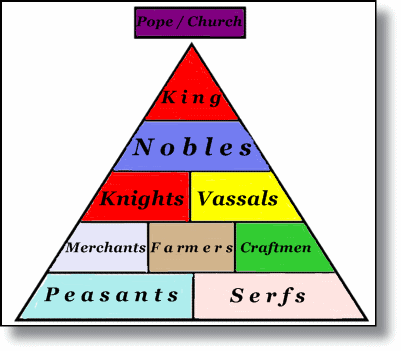

Life in a medieval village was rude and rough. Cattle, horses, and surplus grain also formed common objects of exchange between manors. The chief articles which needed to be brought from some distant market were salt, iron, and millstones. Their meal and flour were ground at the village mill and at the village smithy, their farm implements were manufactured. They made their own clothes of flax, wool, and leather. The land gave them their food, the forest provided them with wood for their houses and furniture. The inhabitants tried to produce at home everything they required, in order to avoid the uncertainty and expense of trade. Medieval village life during the Middle Ages was self-sufficing.

The population of one of these villages often did not exceed 100 people. The only important buildings in a villages were the parish church, the parsonage, a mill, a stream if one ran through the manor, and possibly a blacksmith's shop. Their small, thatch-roofed, and one-roomed houses would be grouped together in an open space or on both sides of a single, narrow street. The peasants, including serfs, freeman, and villeins, on a manor lived close together in one or more villages. Servants, on the other hand, were peasants who worked in the lord's manor house, doing the cooking, cleaning, laundering, and other household chores. Sometimes a serf saved enough money to buy their freedom and become a freeman.

Serfs had small plots of land they could work for themselves. Men, women, and children worked side by side. They tended the crops, cared for the livestock, built and maintained the buildings, made the clothing, and cut firewood. Serfs did all the work on the manor farm. They were bound to the manor and could not leave it or marry without the manor lord's permission. Serfs lived in small communities called manors that were ruled by a local lord or vassal. Some peasants were freemen, who paid money or food for their land, but others, called villeins, had to work part-time for their lord. In return, the landowners protected the peasants from enemy attacks. They farmed he land of the knights, nobles, and kings. Peasants were at the bottom of the social system.


 0 kommentar(er)
0 kommentar(er)
